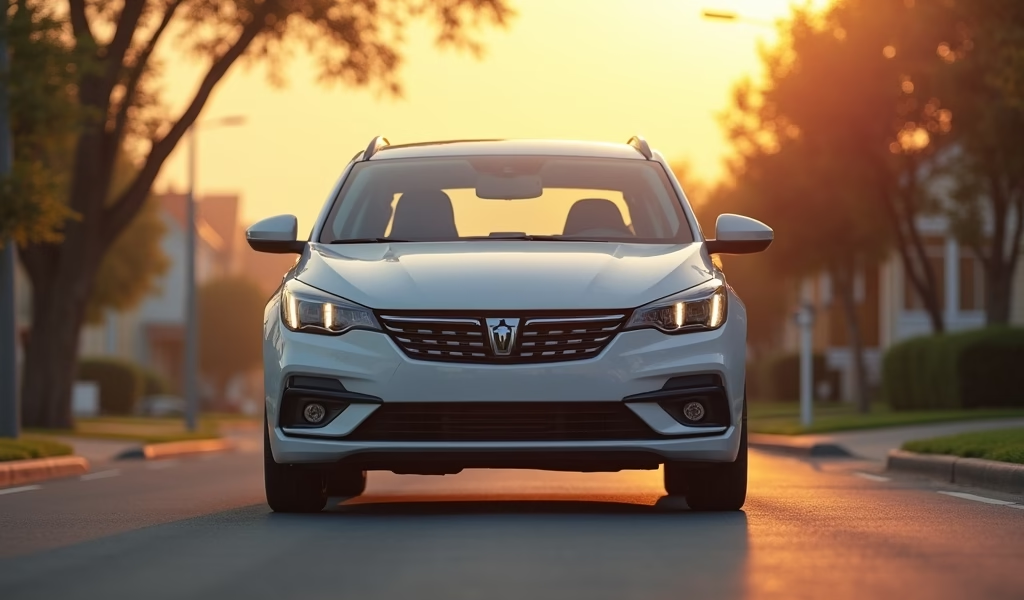Overview
This guide explains how new drivers can navigate high insurance rates by choosing the right insurance company (like State Farm, Progressive, or Geico), implementing money-saving strategies (such as taking defensive driving courses and maintaining good grades), and selecting appropriate coverage types. The article emphasizes that new driver status is temporary, and rates will decrease over time with safe driving, while providing specific advice for both young drivers and parents adding teens to their policies.
Table of Contents
- Understanding Insurance for New Drivers
- Factors That Affect Insurance Rates for New Drivers
- Best Insurance Companies for New Drivers
- How to Save Money on Car Insurance as a New Driver
- Essential Coverage Types for New Drivers
- How to Effectively Compare Insurance Quotes
- Parents’ Guide to Adding Teen Drivers
- Conclusion
- Frequently Asked Questions
Understanding Insurance for New Drivers
Getting behind the wheel for the first time is exciting, but finding the best car insurance for new drivers can feel like navigating a complex maze. I’ve been helping folks with their cars and insurance needs for over 15 years, and I can tell you – not all policies are created equal when you’re new to the road.
New drivers, whether they’re teenagers who’ve just passed their test or adults who learned later in life, face unique challenges in the insurance market. Insurance companies see you as a higher risk, simply because you don’t have a track record of safe driving. It’s not personal – it’s just statistics.
The good news? You’re not stuck paying astronomical premiums forever. With the right knowledge and a few smart moves, you can find affordable coverage that doesn’t skimp on protection. That’s exactly what we’ll explore in this guide.
Think of this article as your roadmap to navigating the insurance landscape as a new driver. We’ll look at everything from which companies offer the best deals to clever ways to lower your premiums without sacrificing coverage.
Factors That Affect Insurance Rates for New Drivers
Before we dive into specific insurance companies, let’s pop the hood and examine what drives those higher rates for new drivers. Understanding these factors can help you make choices that positively impact your premiums.
Age plays a significant role in determining your insurance rates. Teen drivers typically face the highest premiums, with rates gradually decreasing as drivers reach their mid-20s. According to the Insurance Institute for Highway Safety, drivers aged 16-19 are nearly three times more likely to be in a fatal crash than drivers 20 and older.
Your driving record starts the moment you get your license. Every clean month of driving gradually builds your reputation as a safe driver. Conversely, tickets and accidents can significantly impact your rates – sometimes doubling them overnight.
The type of vehicle you drive matters tremendously. That sporty coupe might look fantastic, but it could cost you a fortune to insure. Insurance companies consider factors like:
- Vehicle safety ratings
- Repair costs
- Likelihood of theft
- Engine size and horsepower
Where you live affects your rates, too. Urban areas typically have higher premiums due to increased traffic density and higher crime rates. Rural drivers often enjoy lower rates thanks to fewer accidents and vehicle thefts.
Your education level and credit score may impact your rates in many states. Some insurance companies offer good student discounts for those maintaining a B average or better. Meanwhile, a higher credit score can translate to lower premiums in states where this practice is permitted.

Best Insurance Companies for New Drivers
After years of helping new drivers find the right coverage, I’ve seen which insurance providers consistently deliver the best combination of value, service, and coverage options. Here are my top recommendations for new driver car insurance in 2023:
State Farm
State Farm earns top marks for new drivers for several reasons. Their Steer Clear program specifically targets young drivers, offering both education and potential discounts. They also feature impressive good student discounts (up to 25%) and have one of the best parent-teen driver programs in the industry.
What I particularly appreciate about State Farm is their extensive network of local agents. Having someone you can call directly when you have questions makes a world of difference for new drivers navigating insurance for the first time.
Progressive
Progressive shines with their Snapshot program, which monitors your actual driving habits through an app or device. For cautious new drivers, this usage-based insurance can translate to significant savings based on your real driving patterns rather than just demographic assumptions.
They also offer a unique Name Your Price tool that helps you find coverage options within your budget. For new drivers on a tight financial leash, this transparency is invaluable.
Geico
Geico consistently offers competitive rates for new drivers, especially for college students. Their discount programs are among the most diverse in the industry, with special savings for good students, military personnel, federal employees, and members of various organizations.
Their mobile app makes managing your policy straightforward, and their claims process is notably efficient – something you’ll appreciate if you ever need to file one.
Liberty Mutual
Liberty Mutual stands out with their RightTrack program, which can lead to discounts of up to 30% for safe driving habits. They also offer an impressive accident forgiveness program that can be especially valuable for new drivers who might make a mistake as they gain experience.
Their Teacher’s Auto Insurance program provides specialized benefits for educators, making them worth considering if you’re a teacher who’s new to driving or have a teen driver in your household.
USAA
For military families, USAA offers exceptional value. Their rates for teen drivers are often significantly lower than competitors, and their customer satisfaction ratings consistently top the charts. They also provide a driver training discount and offer reduced rates for good students.
While USAA membership is limited to military personnel and their families, if you qualify, they should definitely be on your shortlist.
How to Save Money on Car Insurance as a New Driver
Now for the part everyone’s waiting for – how to get cheap car insurance for new drivers without sacrificing necessary protection. After years in the automotive industry, I’ve gathered these proven strategies:
Take a Defensive Driving Course
Many insurers offer discounts for completing approved defensive driving courses. These classes typically cost between $25 and $100 but can lead to discounts of 5-15% on your premium. The knowledge gained can also help you become a safer driver, potentially avoiding accidents and claims that would raise your rates.
Consider Usage-Based Insurance
If you’re a cautious driver who doesn’t rack up many miles, usage-based insurance programs like Progressive’s Snapshot or Allstate’s Drivewise can lead to substantial savings. These programs track your driving habits through an app or device and reward safe behaviors like gentle braking and staying within speed limits.
Choose Your Vehicle Wisely
That sports car might be tempting, but your insurance premiums won’t be. Consider vehicles with:
- High safety ratings
- Lower repair costs
- Anti-theft features
- Moderate engine power
Four-door sedans and smaller SUVs with good safety records typically offer the best insurance value for new drivers.
Bundle Policies
If you have renter’s or homeowner’s insurance, bundling these policies with your auto insurance can lead to multi-policy discounts. These discounts typically range from 5-25%, depending on the company.
Maintain Good Grades
For student drivers, maintaining a B average or better can qualify you for good student discounts. These discounts can be substantial – often 10-15% off your premium – making it one of the easiest ways for young drivers to save.
Consider a Higher Deductible
Raising your collision and comprehensive deductibles from $500 to $1,000 could lower your premium by 15-30%. Just make sure you have enough savings to cover the higher deductible if you need to file a claim.
Essential Coverage Types for New Drivers
When you’re new to driving, understanding insurance coverage types can feel like learning a foreign language. Let me break it down into plain English so you can make informed decisions about what protection you really need.
Liability Coverage
This is the foundation of any auto insurance policy and is legally required in most states. It covers damage you cause to other people and their property. While state minimums might seem attractive for their lower premiums, they rarely provide adequate protection. For new drivers, I typically recommend liability limits of at least 100/300/100 ($100,000 per person for bodily injury, $300,000 per accident for bodily injury, and $100,000 for property damage).
Collision Coverage
This covers damage to your vehicle when you’re at fault in an accident. For new drivers with vehicles less than 10 years old, collision coverage is usually worth the investment. It gives you peace of mind knowing that a mistake won’t leave you without transportation.
Comprehensive Coverage
This protects against non-collision incidents like theft, vandalism, natural disasters, or hitting an animal. If you’re financing or leasing your vehicle, this coverage is typically required by your lender.
Uninsured/Underinsured Motorist Coverage
Despite laws requiring insurance, many drivers on the road are either uninsured or carry minimal coverage. This protection covers your expenses if you’re hit by one of these drivers. For new drivers, this coverage provides an extra layer of security when you’re still developing your road awareness.
Personal Injury Protection (PIP)
Available in some states, PIP covers medical expenses for you and your passengers regardless of who caused the accident. For new drivers who might be more accident-prone, this coverage can be particularly valuable.

How to Effectively Compare Insurance Quotes
Getting quotes from multiple insurers is essential, but comparing them effectively requires more than just looking at the bottom line. Here’s my approach to making sure you’re comparing apples to apples:
Standardize Your Coverage Limits
When requesting quotes, use identical coverage limits and deductibles for each company. This ensures you’re making a fair comparison. If one quote looks significantly cheaper, double-check that it includes the same coverage levels.
Look Beyond the Premium
Consider factors beyond just the price:
- Financial stability rating of the insurer
- Customer service reputation
- Claims satisfaction ratings
- Availability of local agents if that’s important to you
- Mobile app functionality and online tools
A slightly higher premium might be worth it for superior service when you need to file a claim.
Ask About Discounts
Different insurers offer different discount programs. When comparing quotes, ask each company about all available discounts you might qualify for, as these aren’t always automatically applied to initial quotes.
Consider Long-Term Costs
Some companies offer attractive introductory rates that increase significantly after the first renewal. Ask about how the company typically handles rate increases and what might trigger them.
According to J.D. Power’s Auto Insurance Study, there can be a substantial difference in customer satisfaction between insurers, which often correlates with how they handle claims and rate increases.
Parents’ Guide to Adding Teen Drivers
If you’re a parent adding a teen driver to your policy, you’re likely experiencing sticker shock. Let’s talk about how to navigate this transition while keeping costs manageable.
Adding vs. Separate Policies
In almost all cases, adding your teen to your existing policy is more economical than purchasing a separate policy. Your established driving record helps offset some of the risk associated with your inexperienced driver.
Vehicle Assignment Strategies
Most insurance companies will assign your teen driver to the most expensive vehicle on your policy unless you specify otherwise. If you have multiple vehicles, you can often save by officially assigning your teen to the least expensive vehicle to insure (typically an older, safer model with fewer bells and whistles).
Leverage Student Discounts
Make sure to take advantage of good student discounts if your teen maintains the required GPA (typically a B average or better). Additionally, many insurers offer discounts for students who are away at college without a car, so don’t forget to mention this if it applies.
Consider Monitoring Programs
Many insurance companies offer programs specifically for teen drivers that involve some form of monitoring, either through an app or a device installed in the vehicle. These programs can provide both potential discounts and, more importantly, feedback to help your teen develop safe driving habits.
Set Clear Expectations
Consider creating a driving contract with your teen that outlines your expectations regarding safe driving practices. Some parents also have their teens contribute to the increased insurance costs, which can help reinforce the financial responsibility that comes with the privilege of driving.
Conclusion
Finding the best car insurance for new drivers doesn’t have to be overwhelming. By understanding the factors that affect your rates, choosing the right insurance company, and implementing smart money-saving strategies, you can secure quality coverage without breaking the bank.
Remember that your status as a “new driver” is temporary. As you build a history of safe driving, your rates will gradually decrease. In the meantime, focus on maintaining a clean driving record, taking advantage of all applicable discounts, and periodically shopping around to ensure you’re still getting the best deal.
The road to affordable insurance as a new driver may have some bumps along the way, but with patience and the right approach, you’ll find that sweet spot of good coverage at a reasonable price. Keep those tires properly inflated, your eyes on the road, and your insurance knowledge up to date – you’ll be navigating the insurance landscape like a pro in no time.
Frequently Asked Questions
How much higher are insurance rates for new drivers compared to experienced drivers?
New drivers typically pay 1.5 to 3 times more than experienced drivers, with teens seeing the highest rates. This gap gradually narrows with each year of safe driving experience.
Can I get my own policy as a teenager, or should I join my parents’ policy?
Joining your parents’ policy is almost always more affordable than getting your own. Most insurers offer family discounts that make this option significantly cheaper.
How long am I considered a “new driver” for insurance purposes?
Most insurance companies consider drivers “new” for the first 3-5 years of licensed driving. Your rates typically decrease gradually during this period, assuming you maintain a clean driving record.
Will taking driver’s education courses actually lower my insurance costs?
Yes, most insurers offer discounts of 5-15% for completing approved driver’s education courses. These courses demonstrate your commitment to safe driving and can provide valuable skills.
How often should new drivers shop around for better insurance rates?
New drivers should compare rates annually or after major life changes like moving or buying a new vehicle. Your status as a driver evolves quickly in the early years, potentially qualifying you for better rates.


Pingback: Best Insurance for New Drivers: 5 Tips - knowsyourcar.com
Pingback: Insurance for New Drivers: Car Care Tips - knowsyourcar.com